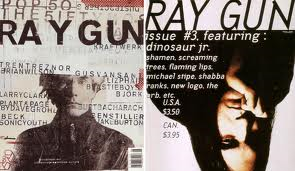Post Modernism started to creep in around the 1950’s, but I’m going to focus on the late 70’s/80’s as that’s what I associate Post Modernism. For Modernism and Ludwig Miles Van der Rohe “Less is more.” but for Robert Venturi and Post Modernism “Less is a bore.” I disagree, less generally is better, but then again I’m not a great fan of the visual aesthetic of the 80’s. Warhol’s pop art prints are great when you first see them work and the Buzzcocks Orgasm Addict cover is really cool but it all becomes a little abrasive and garish after a while. I find a lot of 80’s design a little ugly, as the song say “It was acceptable in the 80’s”. Its just really not my cup of tea.

Buzzcocks, Orgasm Addict, picture from : http://www.creativereview.co.uk/cr-blog/2008/august/constructivism-the-ism-that-just-keeps-givin
I quite like the above image, its quirky and made from parts of an Argos catalogue. I have a we chuckle when I see because its funny in its own subversive way. Post Modernism, rejected and recycled the old, it was avant garde but also the artistic style of the time. We had a two part lecture on Post Modernism. The second half being about commercialism, mass production and reproduction, which I feel sums up Post Modernism really well. Now I wasn’t around in the 80’s so my view is a little bit skewed by films, to me the 80’s was very much about money, sex, power, rebellion and punk.

Neville Brody, The Face. picture from : http://johnsonbanks.co.uk/thoughtfortheweek/guitars-and-graphics/
On one side their were the rebellious anarchic punks with the likes of Vivienne Westwood and Malcolm Garret. I quite like punk but it is very hard to explain, sometimes it was just trying to be shocking for the sake of insulting people because why not it could. This was counterbalanced by brightly power dressed people talking on giant mobile phones. The 80’s and Post Modernism all just seems to be a little bit done in bad taste, at the time I’m sure it was less so or maybe it wasn’t. I have asked a primary source (my Mum) and she described the 80’s as an age of “visible consumption” in other words if people had money, they bought what was in vogue and made sure everyone could see. Yuppies and Sloane rangers, with giant shoulder pads, a soda stream and the whole family watching E.T and Gremlins.

David Carson for Ray Gun. picture from : http://jacobarmitage.co.uk/most-influential-designers/influential-designers-david-carson/
In terms of design, I was rather irked by a David Carson quote, now I quite like some of Carson’s work, but this I don’t really get and I suppose its this aspect of Post Modernism that I just don’t get. Carson say “Don’t confuse legibility with communication.” Now that’s all fine and dandy for some things but, in a commercial sense what’s the point of having a poster promoting an event or exhibition that either nobody can read or that takes the average person like myself ten minutes to decipher. It can look as abstract and as conceptual and cool as it likes but if doesn’t get the message across before the viewer is either bored, confused or alienated. Post Modernism was new for the time, but its a bit like what happens when you let a three year old lose with coloured paints, its messy, it has some merit but it lacks control. They have all the tools but want to be different and not like what’s gone before but are still inspired by them. And what you get is a huge money spinning, commercial, multi – coloured Frankenstein’s monster that keeps popping up and trying to be cool again. This has happened recently in fashion. The 80’s and Post Modernism have a lot to answer for. They made bad taste kind of acceptable and fashionable and a thing so to speak in art, design, music and fashion. It sometimes leaves you wondering why and also feeling a little bit nauseated.

oh the 80’s…
picture from : http://womens-fashion.lovetoknow.com/Eighties_Fashion_for_Women
References and Links to webpages that helped me write this post :
“Less is More” Ludwig Miles Van der Rohe 1886 – 1969 :http://en.wikipedia.org/wiki/Ludwig_Mies_van_der_Rohe
“Less is a Bore” Robert Venturi 1925 – ? Available at :http://en.wikipedia.org/wiki/Ludwig_Mies_van_der_Rohe
“It was acceptable in the 80’s” from Acceptable in the 80’s by Calvin Harris 2009. Available at : http://artists.letssingit.com/calvin-harris-lyrics-acceptable-in-the-80s-2mxpk7h#axzz2lmaOMdU7
Acceptable in the 80’s by Calvin Harris. Available at : http://www.youtube.com/watch?v=dOV5WXISM24
“Don’t confuse legibility with communication” David Carson, 2007, Helvetica. Available at : http://www.imdb.com/title/tt0847817/quotes
CATSPARELLA. 80 totally awesome things from the 80’s. Available at : http://www.buzzfeed.com/catsparella/80-totally-awesome-things-from-the-80s-1ruv
Wikipedia Postmodernism. Available at : http://en.wikipedia.org/wiki/Postmodernism
Wikipedia Postmodern. Available at : http://en.wikipedia.org/wiki/Postmodern_art
All of the above links were accessed on the 26.11.2013.




